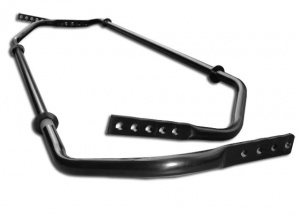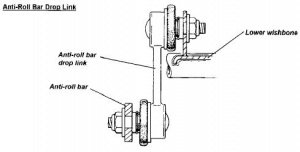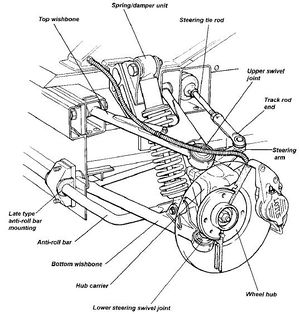Difference between revisions of "Anti roll bar"
Jump to navigation
Jump to search
| Line 5: | Line 5: | ||
Stiffer bars reduce body roll more, but too stiff a bar can deteriorate independent suspension performance, and ultimately cause an inside tire to lift off the ground during hard cornering. | Stiffer bars reduce body roll more, but too stiff a bar can deteriorate independent suspension performance, and ultimately cause an inside tire to lift off the ground during hard cornering. | ||
| − | + | {{clr}} | |
[[Image:arb1.jpg|thumb|left|Eliseparts Uprated ARB]][[Image:arb2.jpg|thumb|left|ARB Mounting]][[Image:arb3.jpg|thumb|left|ARB Drop Link]][[Image:arb4.jpg|thumb|left|Wheel Hub View]] | [[Image:arb1.jpg|thumb|left|Eliseparts Uprated ARB]][[Image:arb2.jpg|thumb|left|ARB Mounting]][[Image:arb3.jpg|thumb|left|ARB Drop Link]][[Image:arb4.jpg|thumb|left|Wheel Hub View]] | ||
{{clr}} | {{clr}} | ||
| − | === | + | == External links == |
| − | |||
[http://en.wikipedia.org/wiki/Sway_bar Wikipedia on Anti Roll Bars] | [http://en.wikipedia.org/wiki/Sway_bar Wikipedia on Anti Roll Bars] | ||
[[Category:Suspension]] | [[Category:Suspension]] | ||
Revision as of 13:40, 29 January 2007
The primary function of anti roll bars is to reduce body roll by adding to the roll resistance of the springs.
The anti-roll bar reduces body roll to keep the suspension geometry, and ultimately the tire, parallel with the road.
Stiffer bars reduce body roll more, but too stiff a bar can deteriorate independent suspension performance, and ultimately cause an inside tire to lift off the ground during hard cornering.




